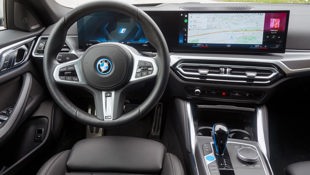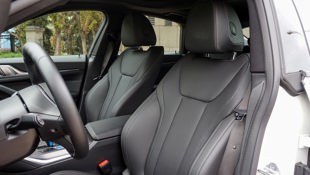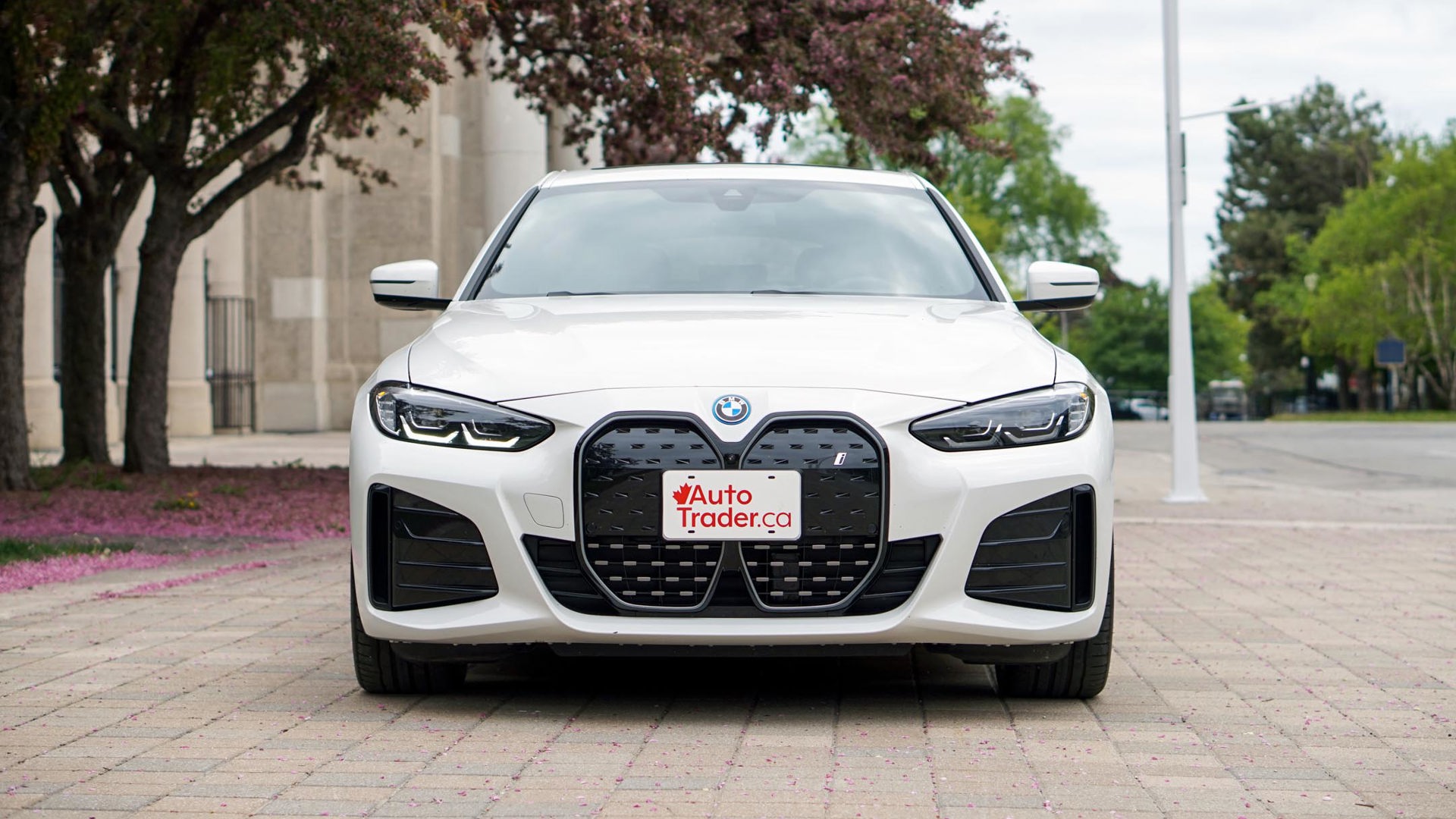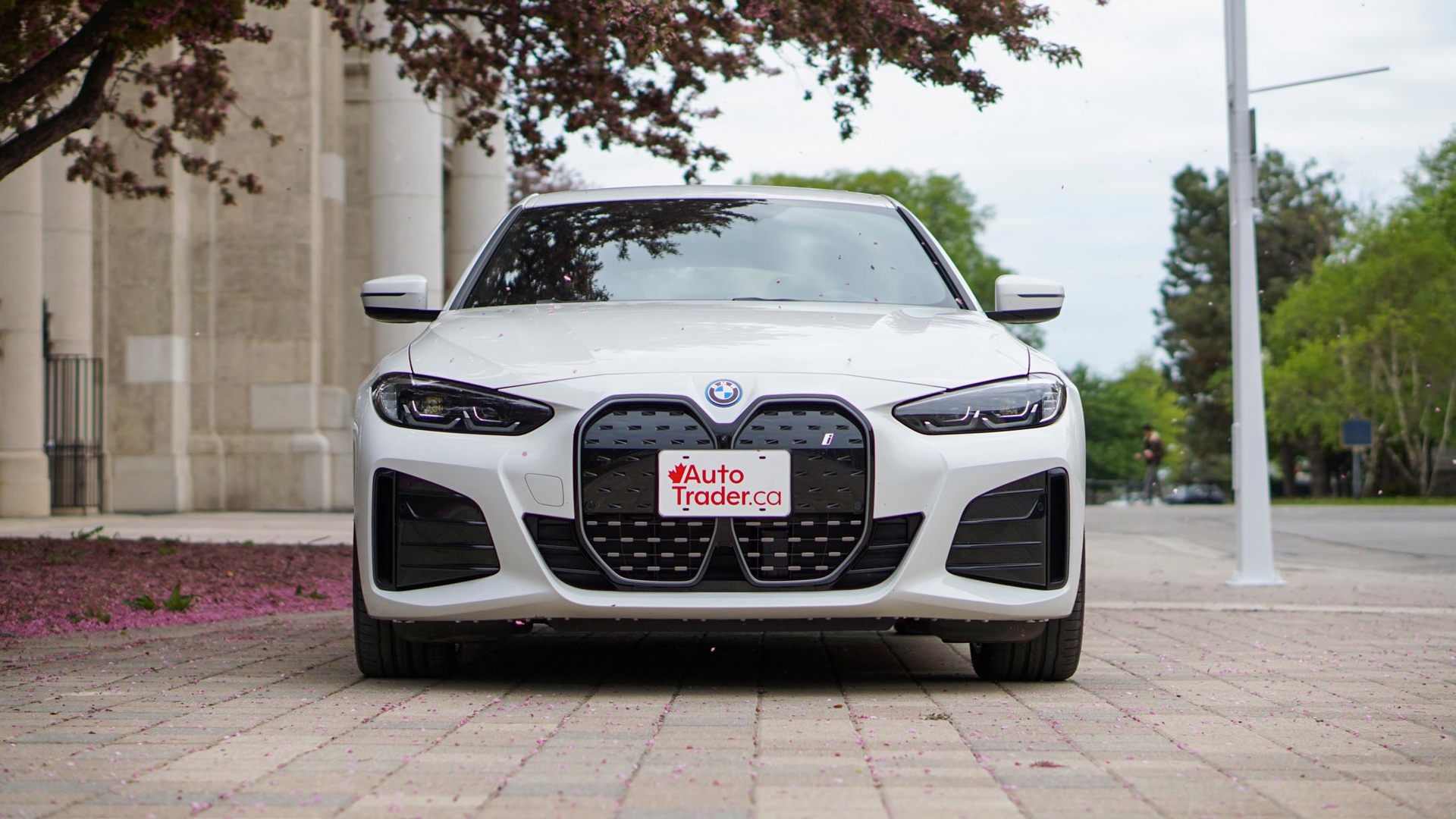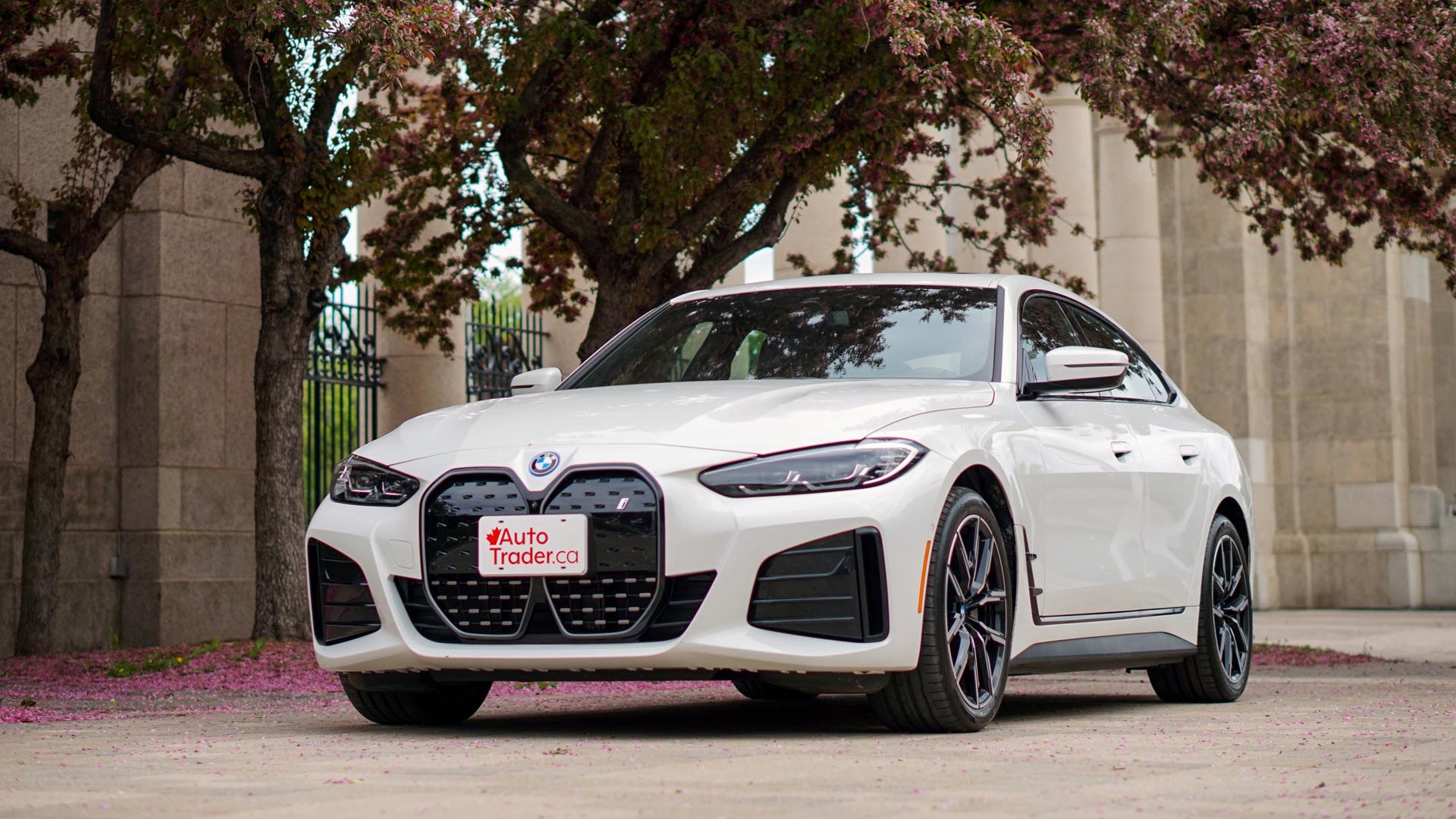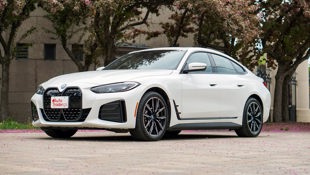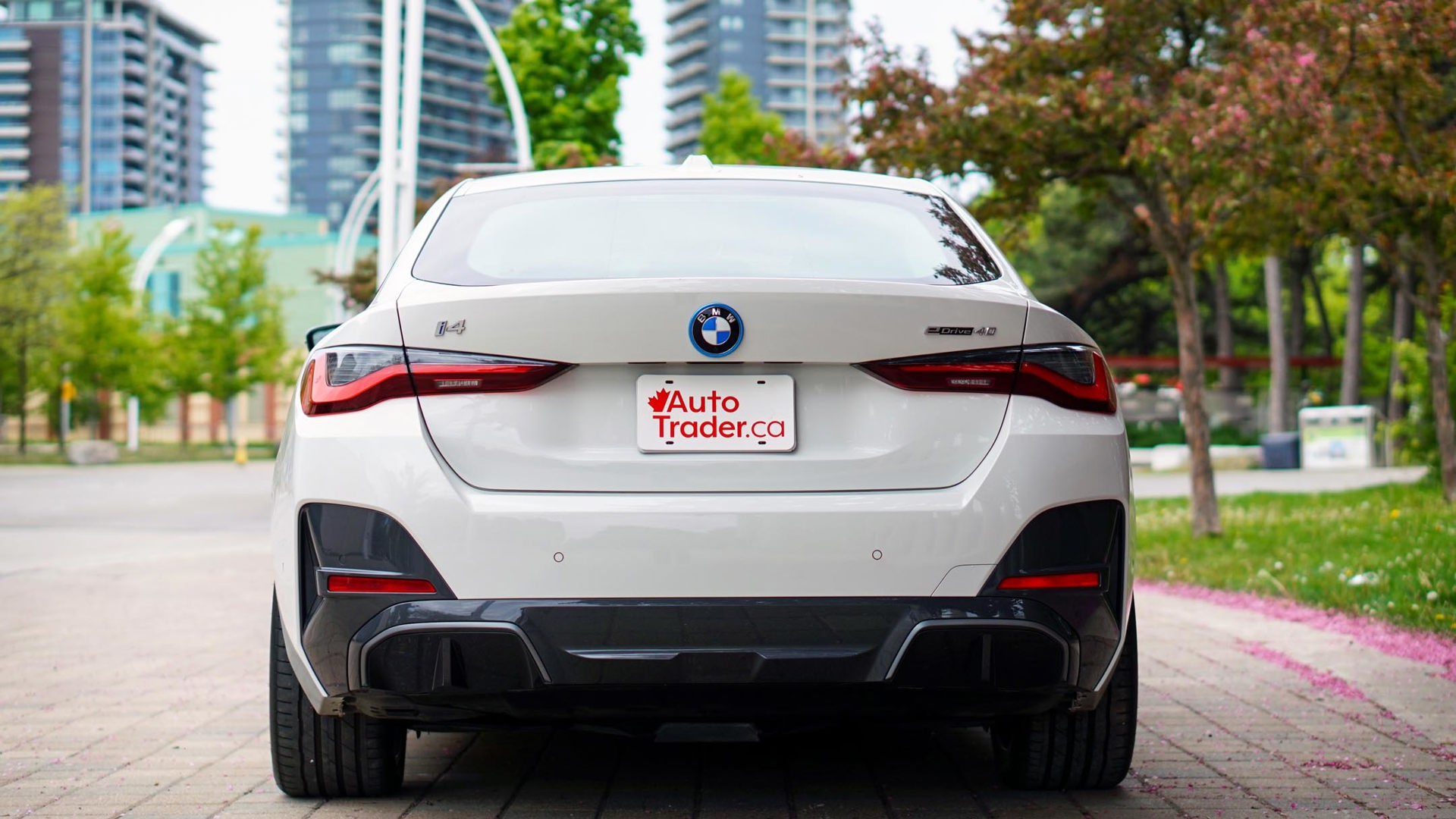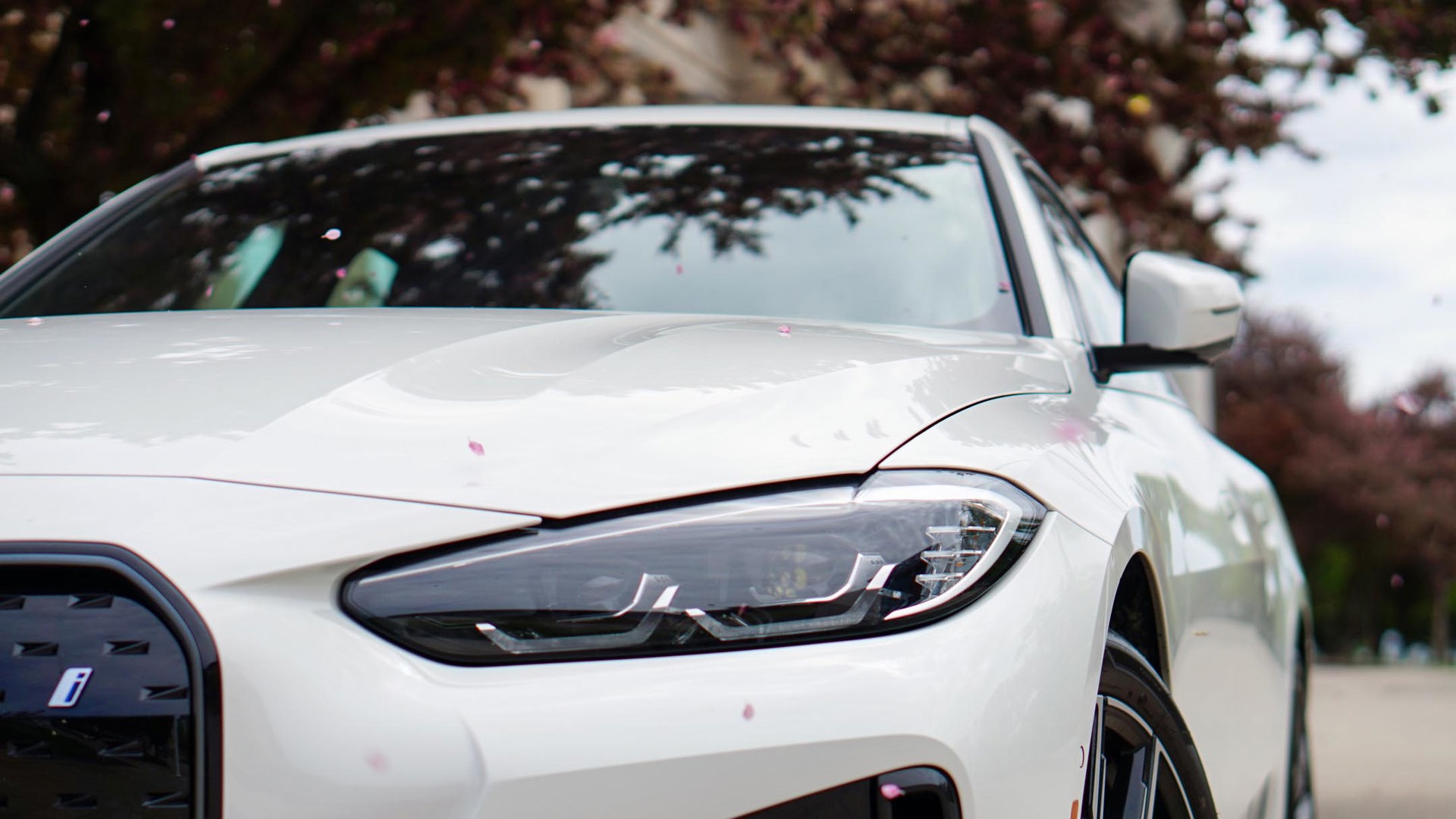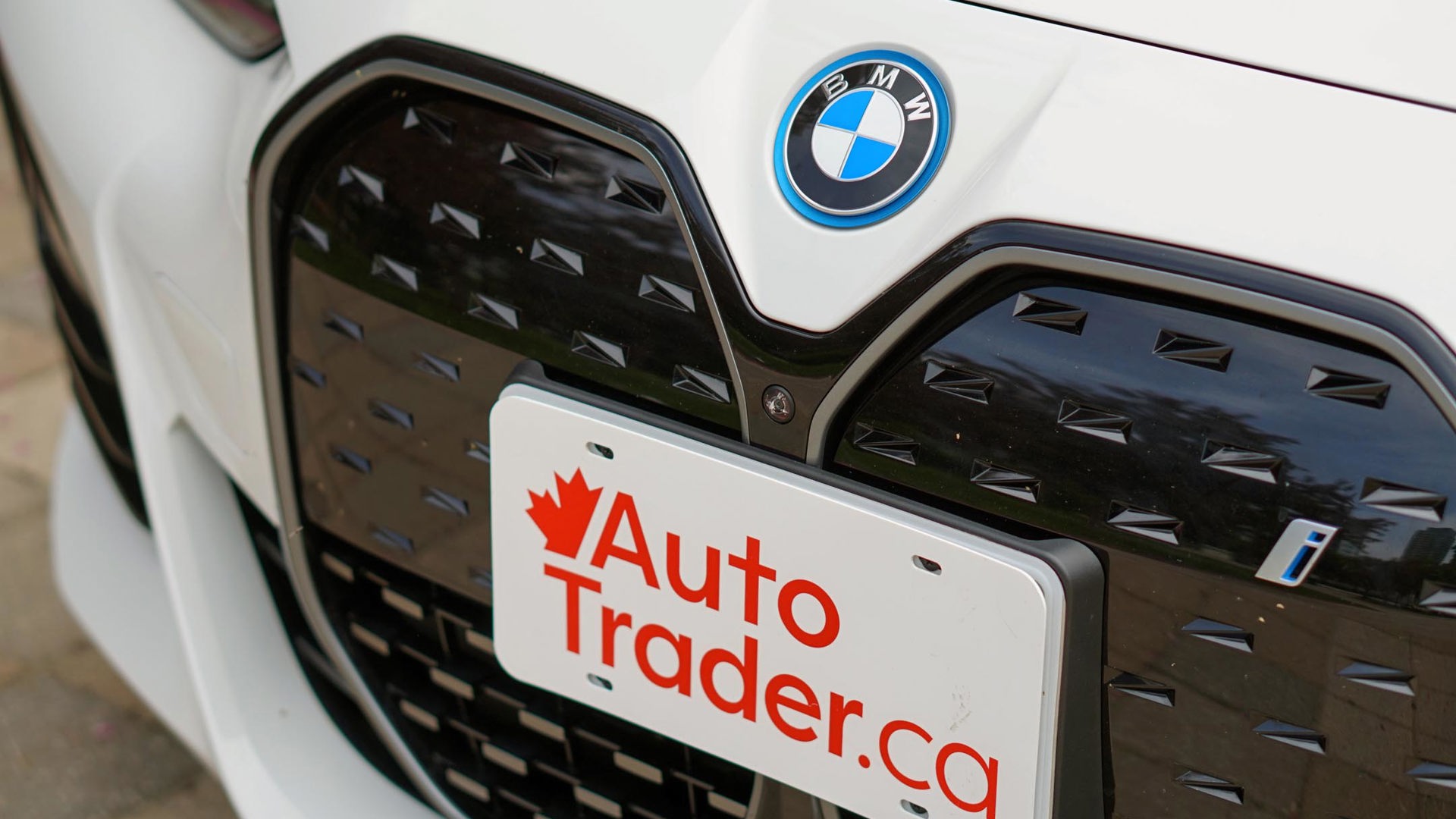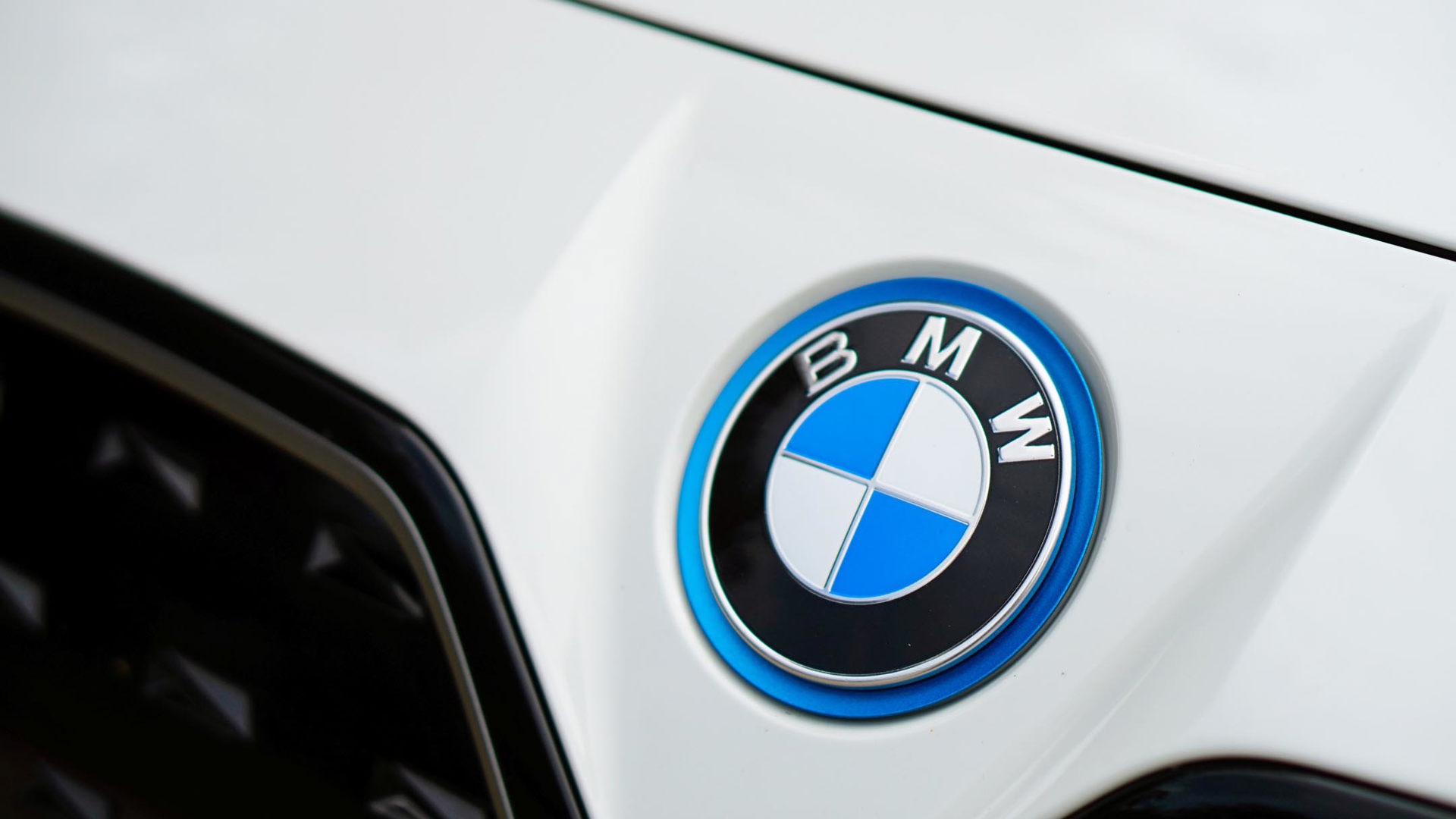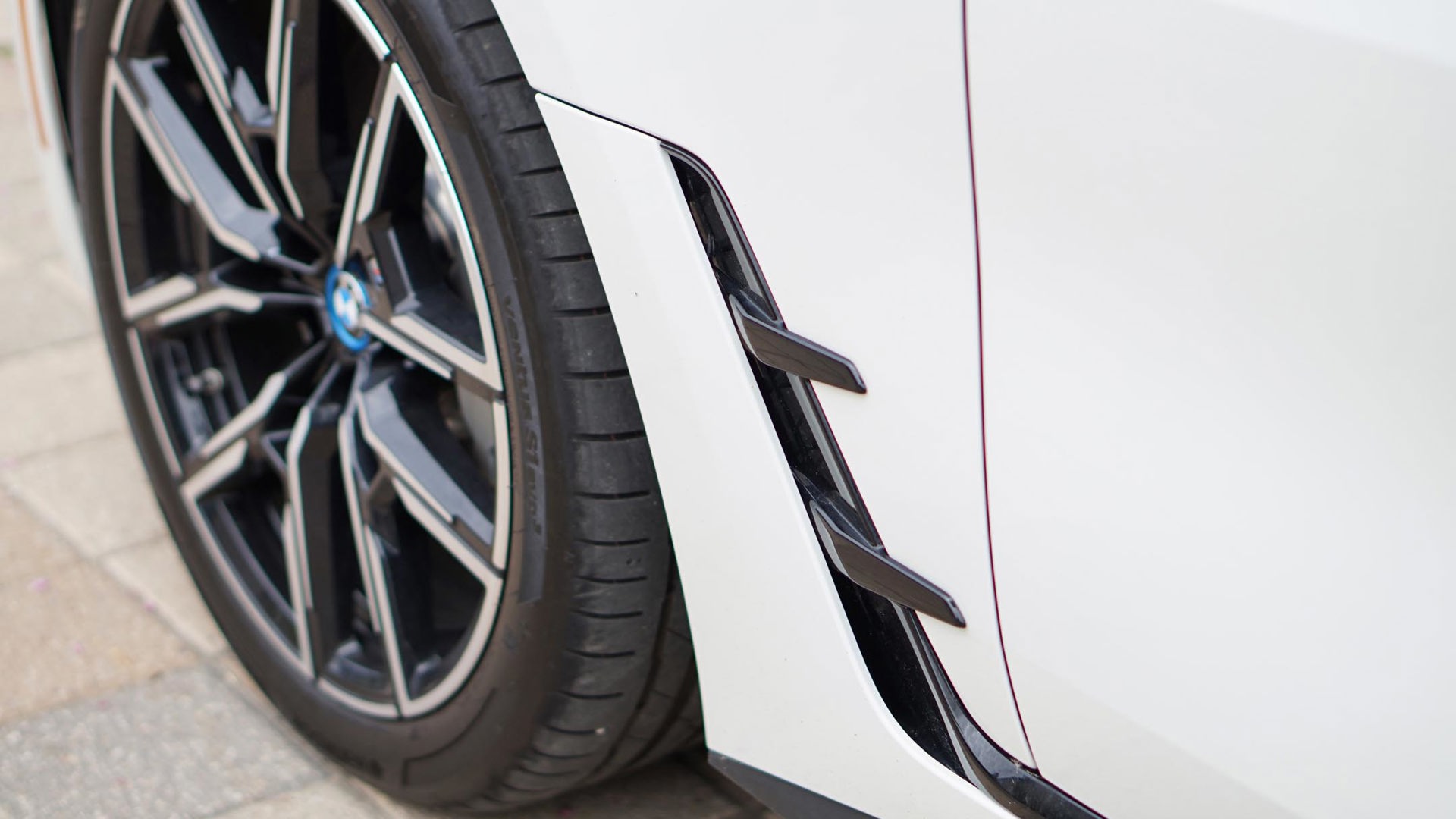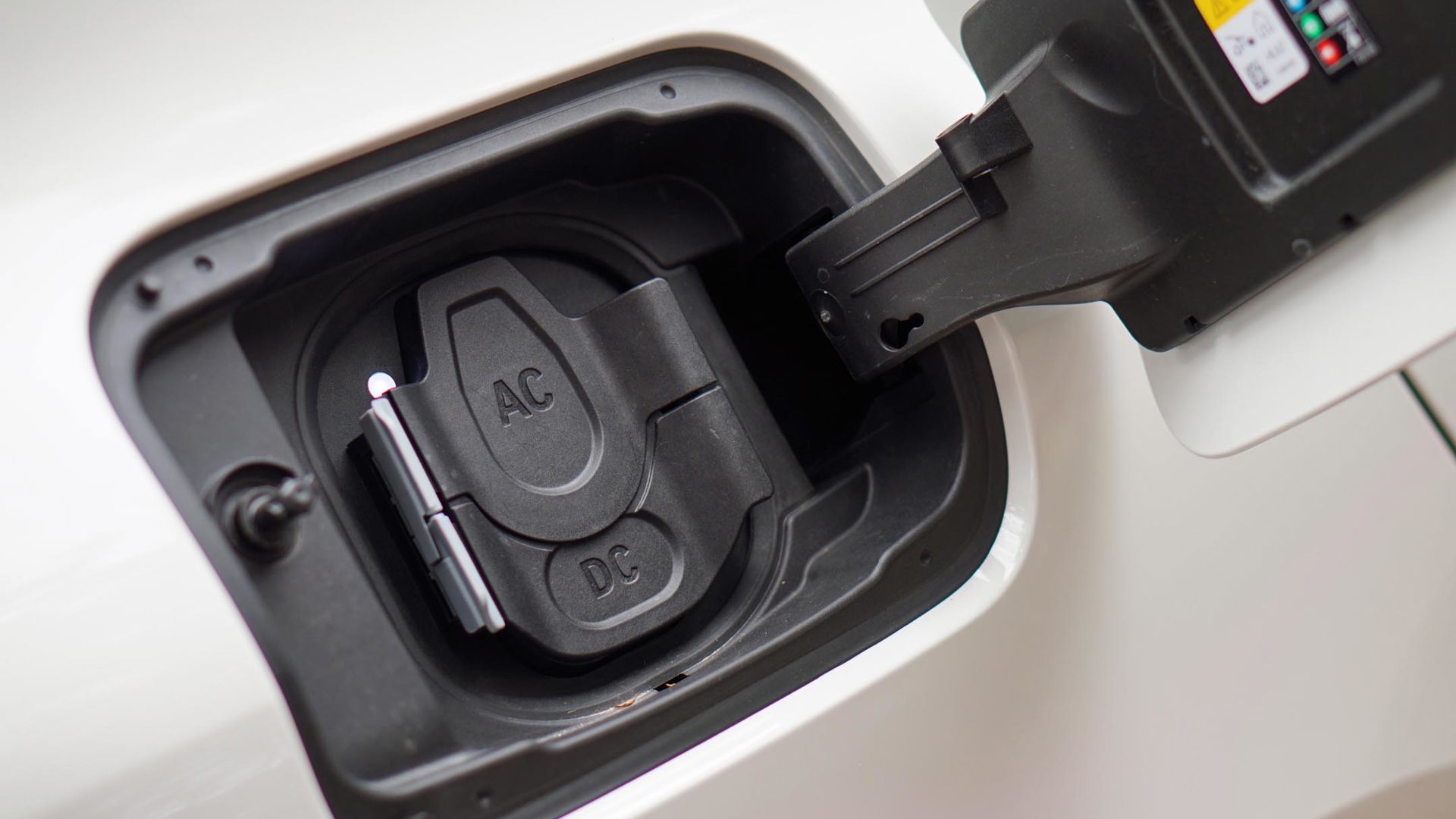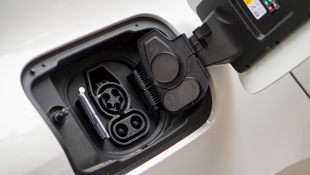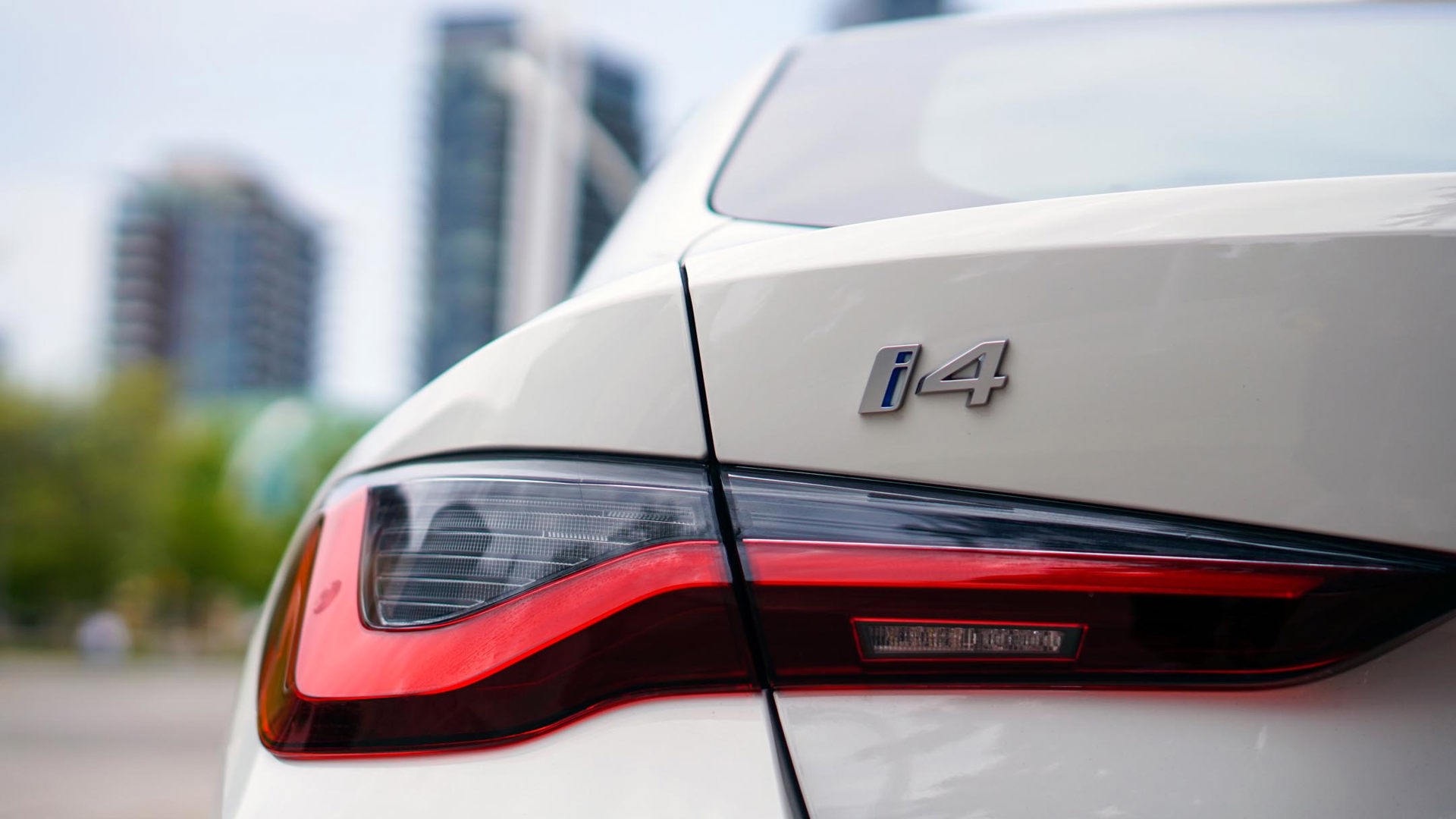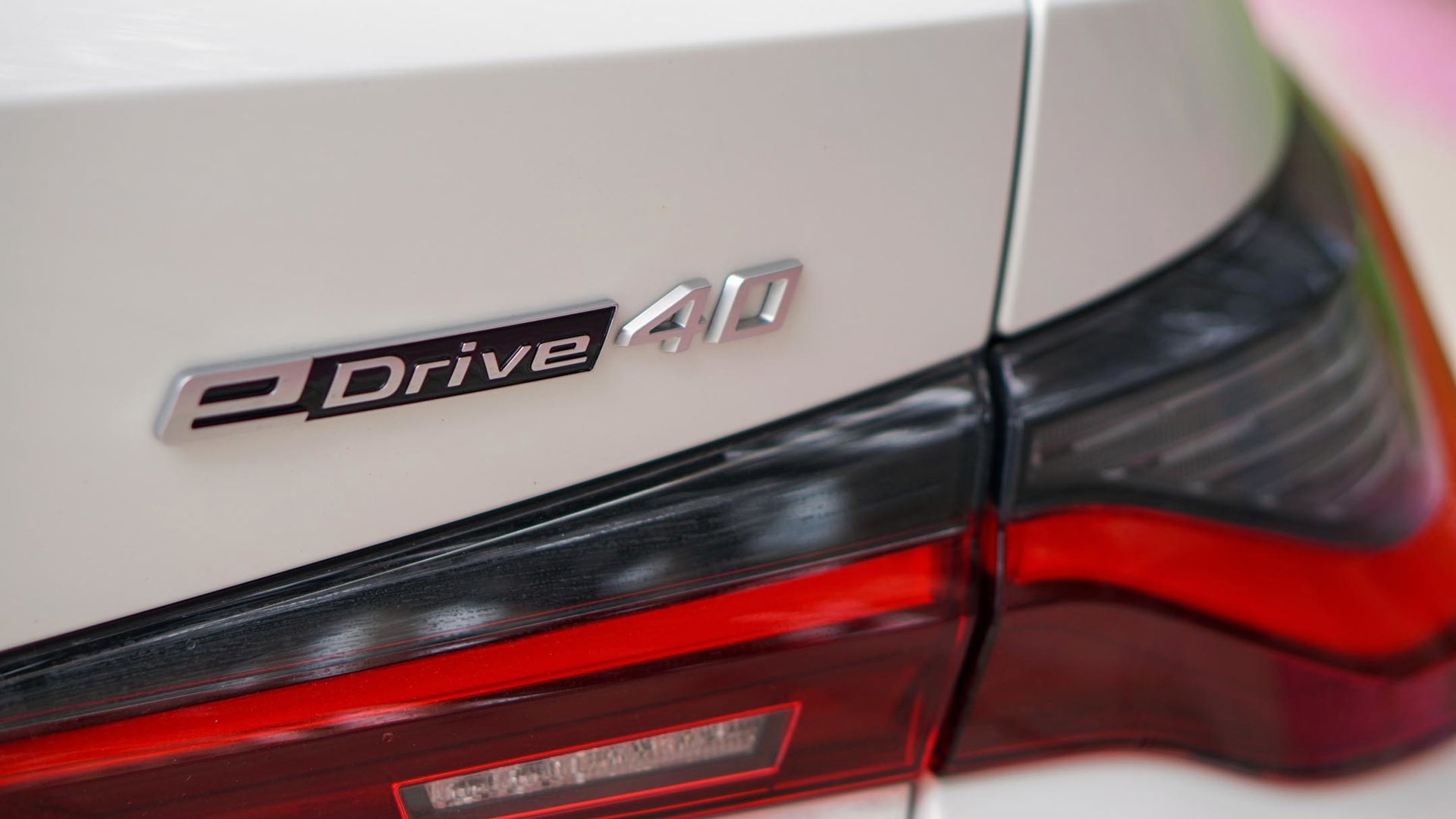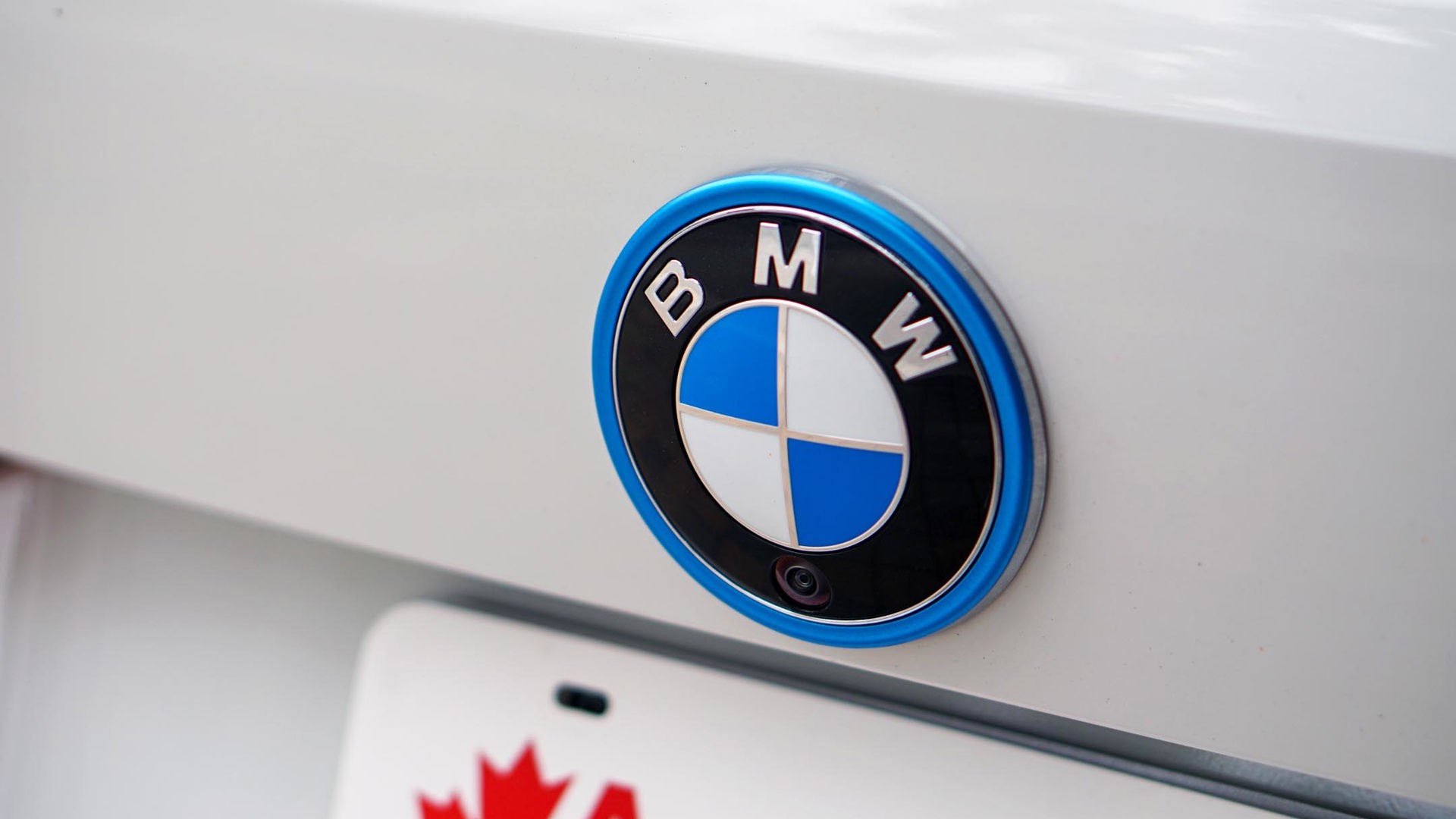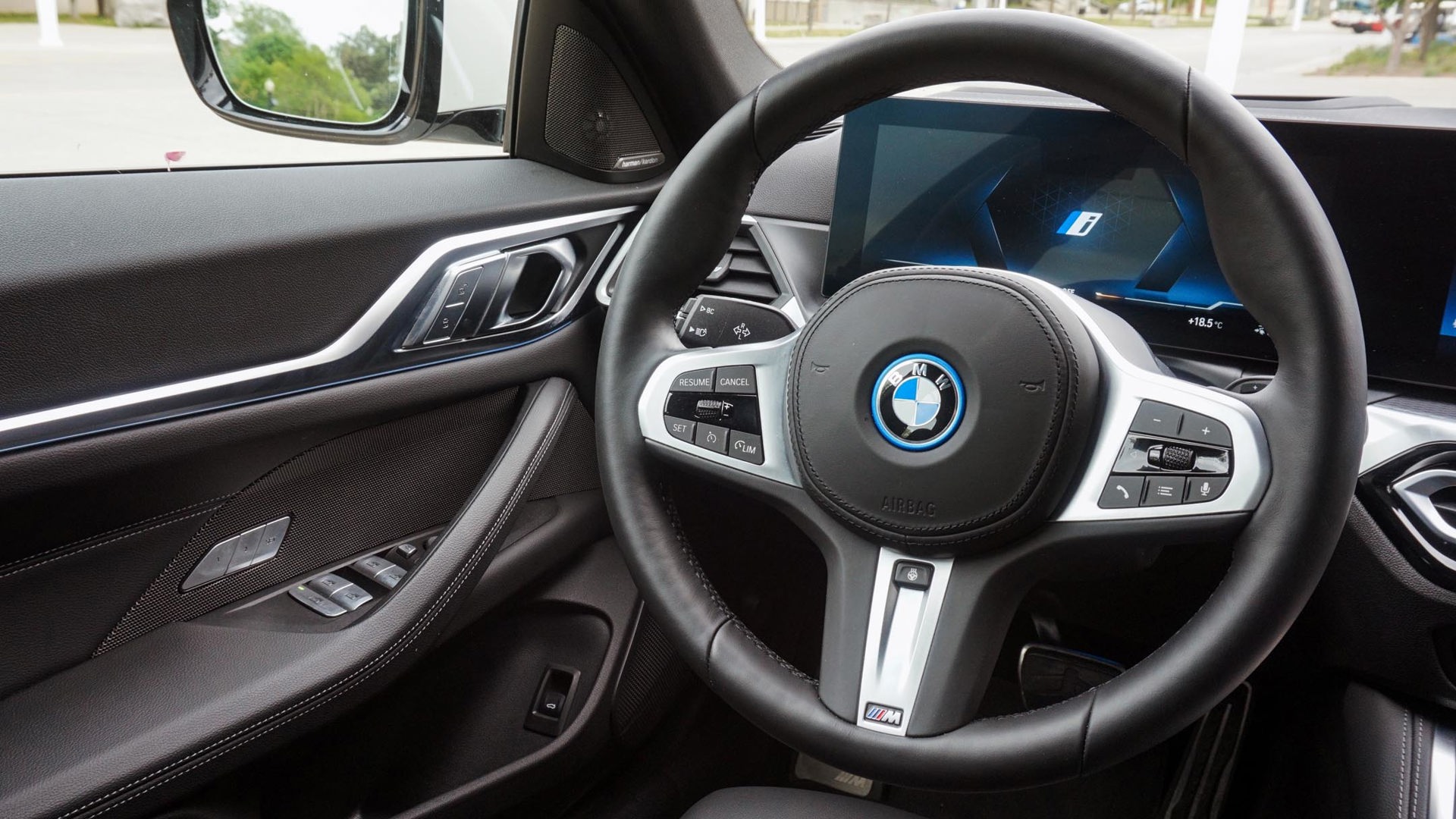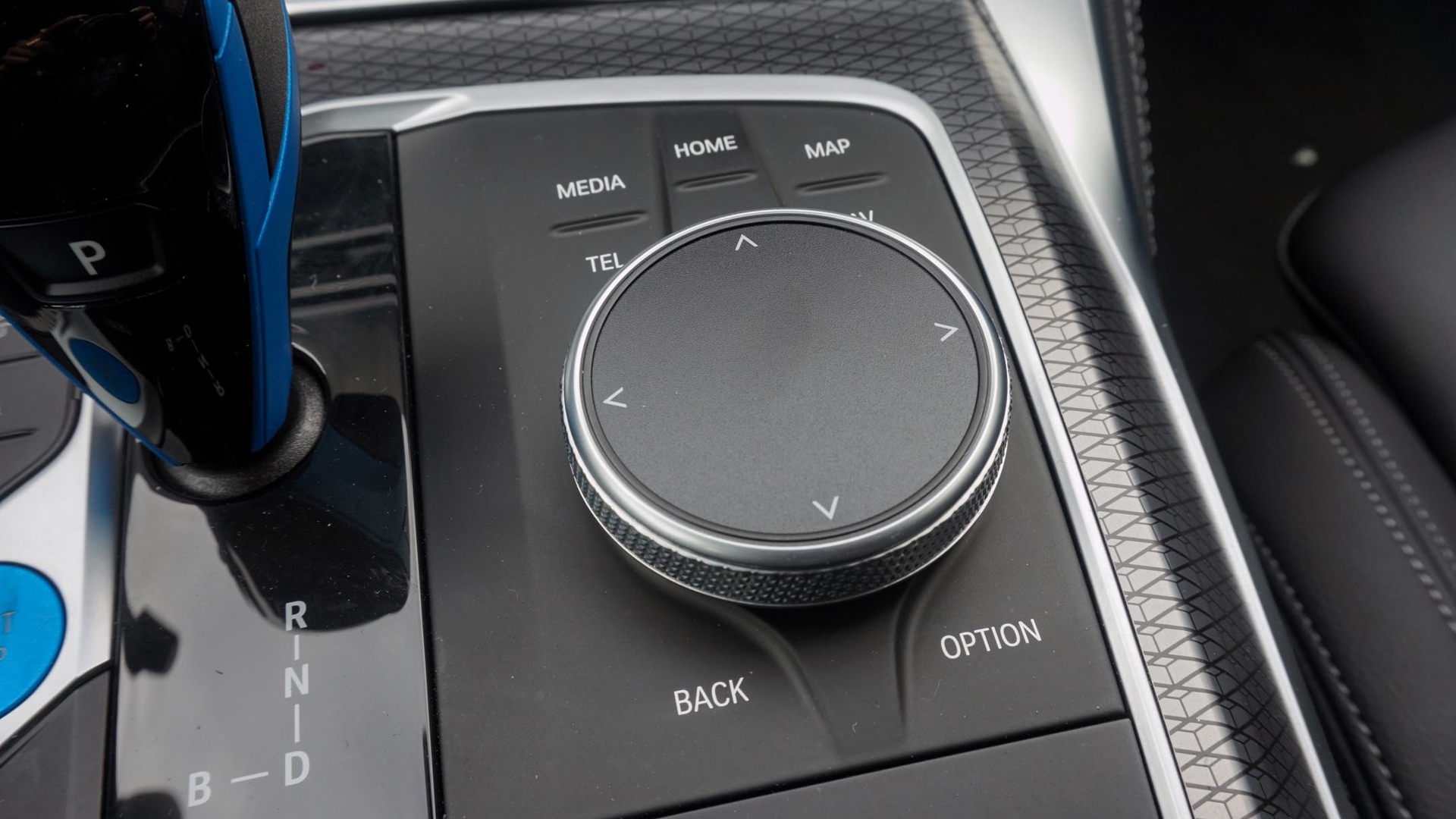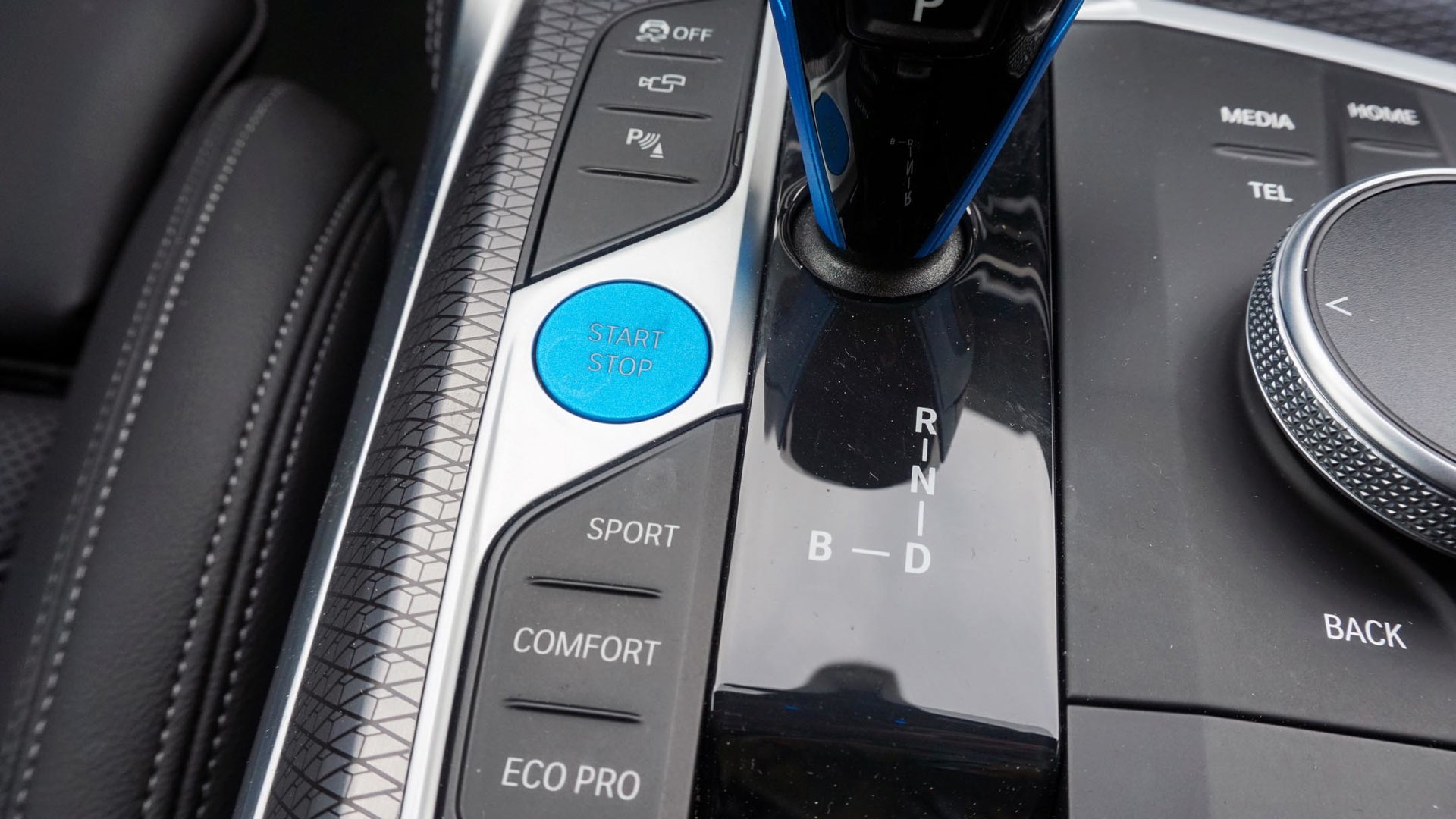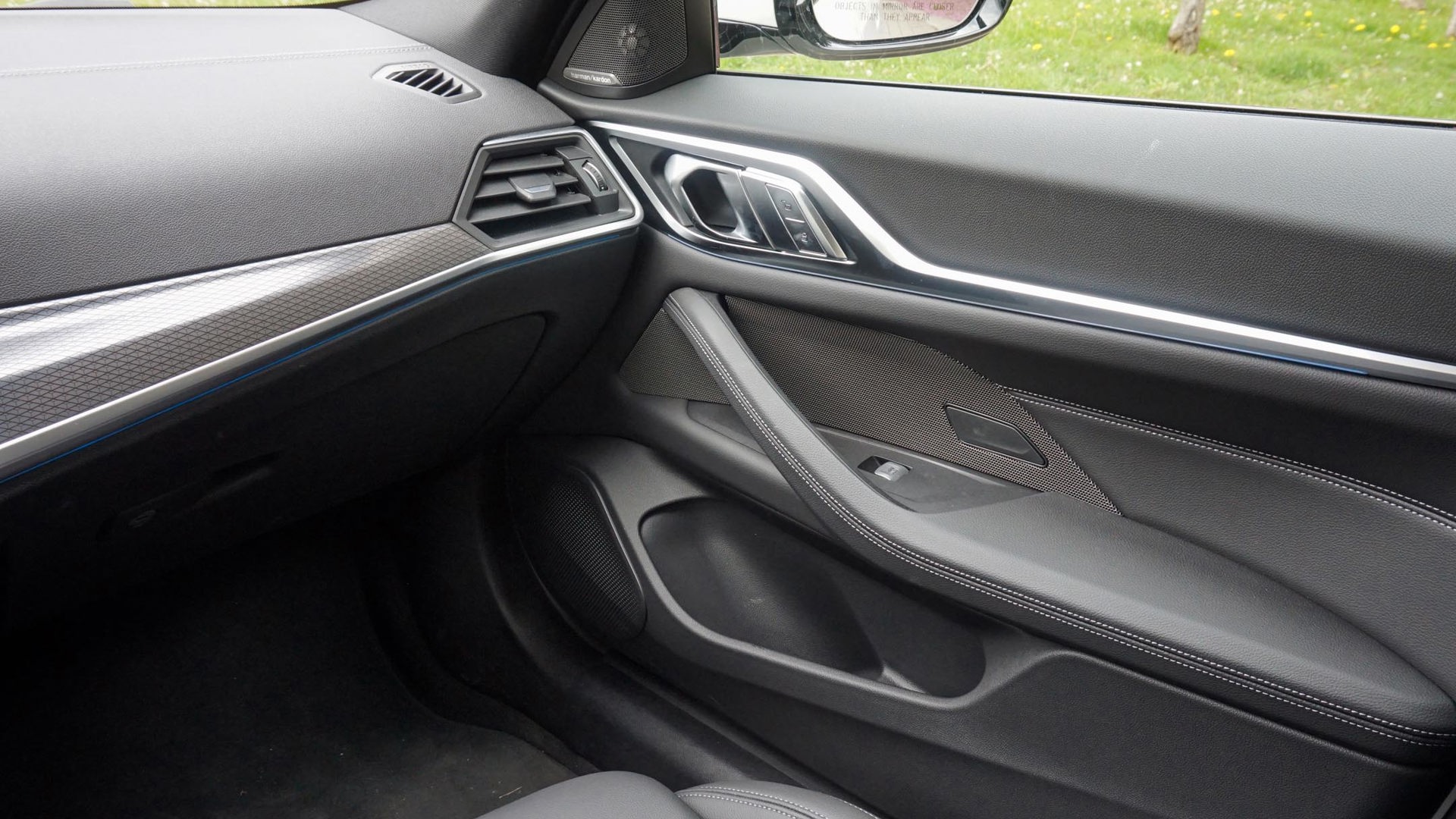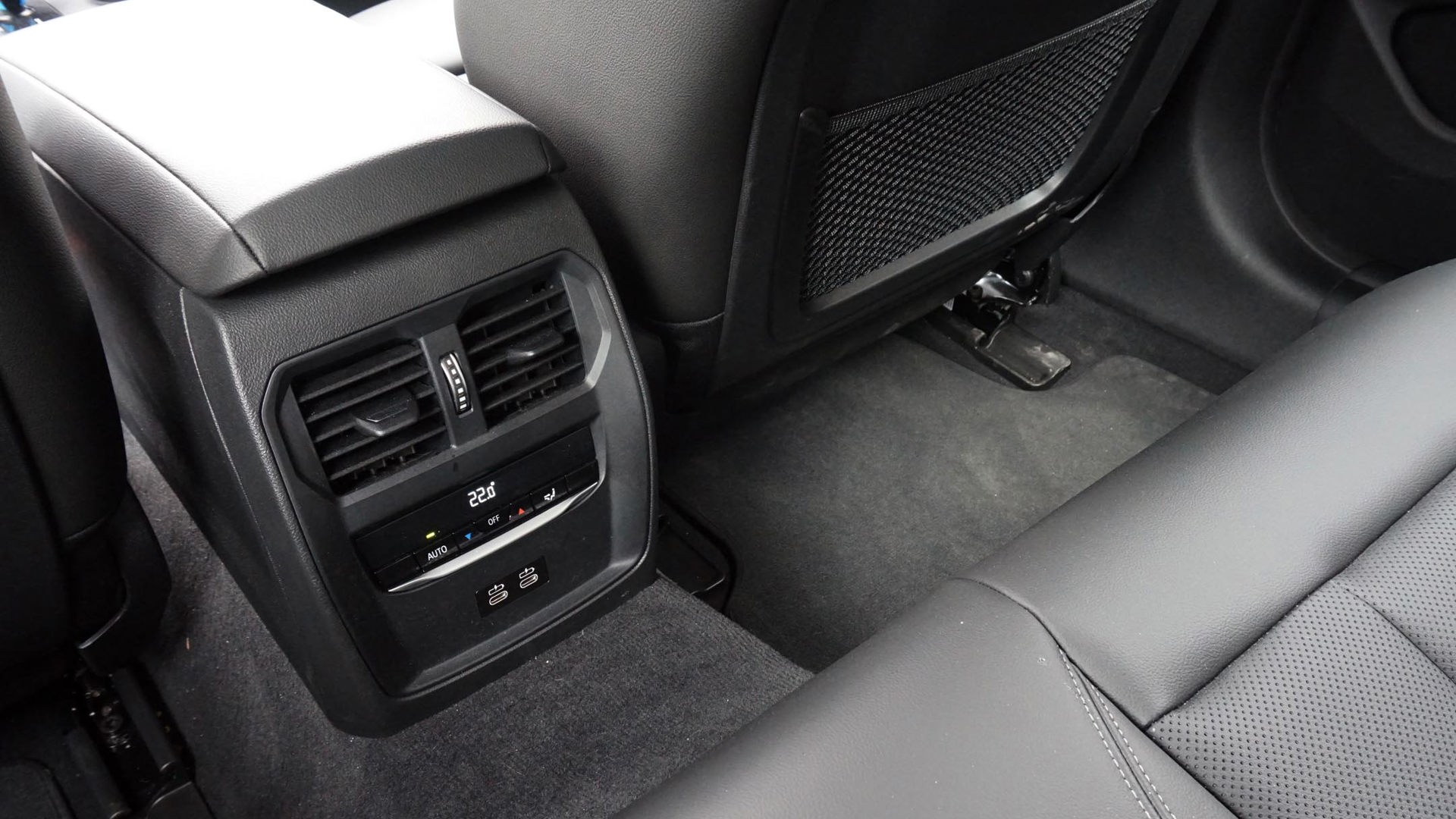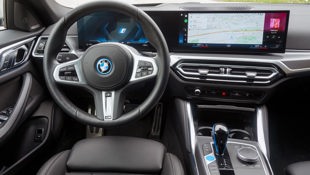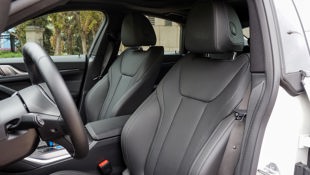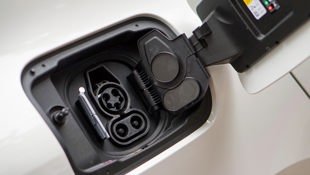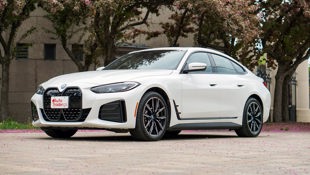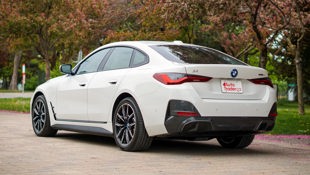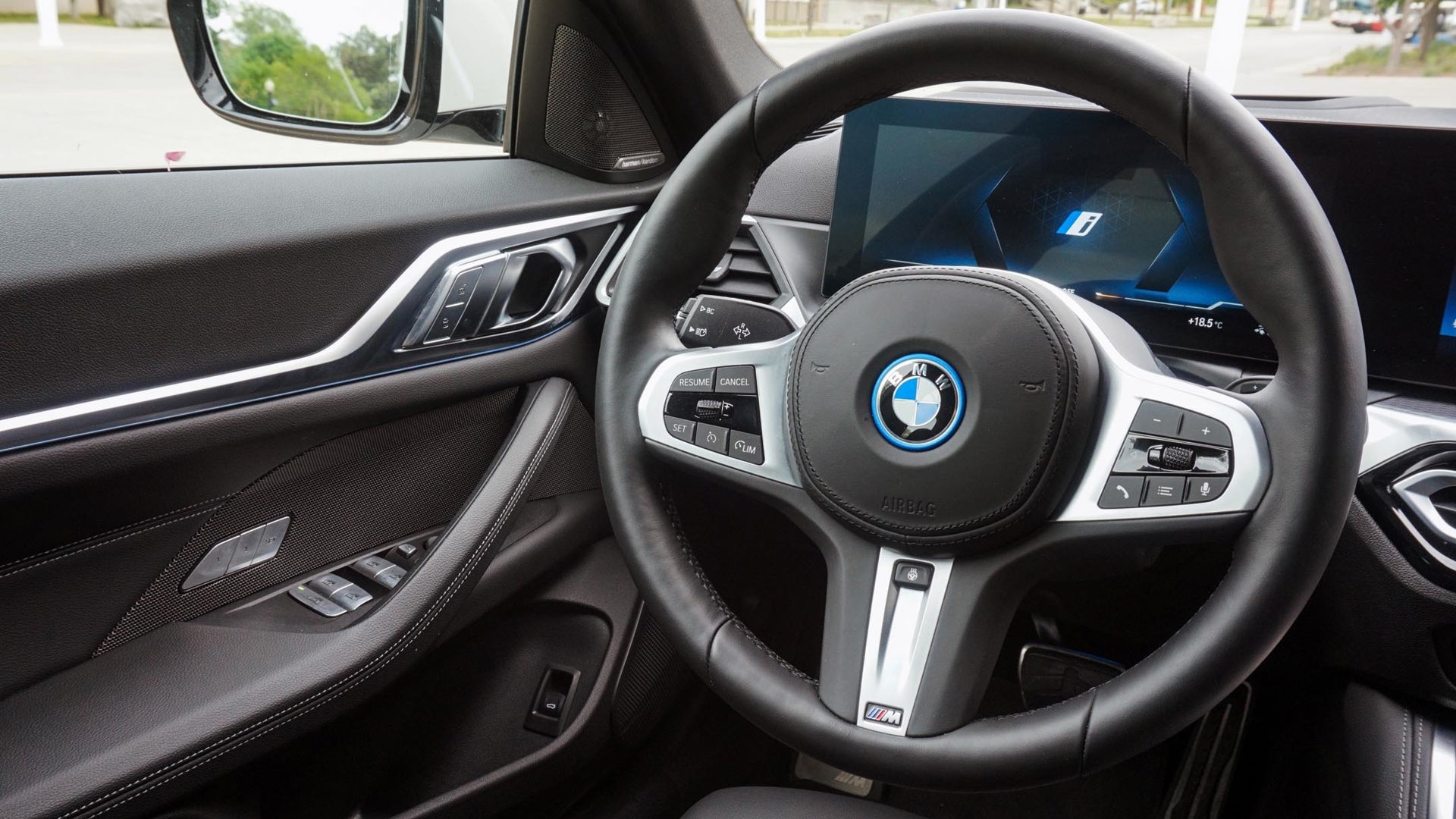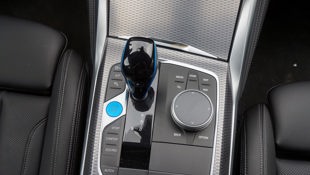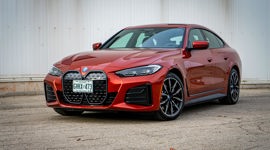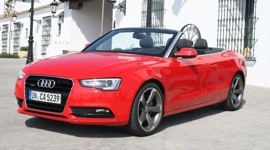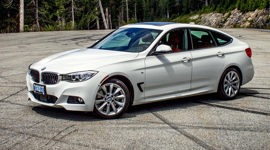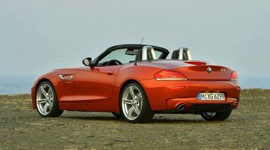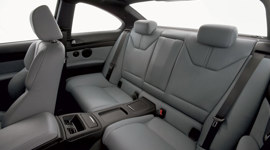 AutoTrader SCORE
AutoTrader SCORE
-
STYLING8/10
-
Safety9/10
-
PRACTICALITY8/10
-
USER-FRIENDLINESS9/10
-
FEATURES9/10
-
POWER9/10
-
COMFORT8/10
-
DRIVING FEEL9/10
-
FUEL ECONOMY9/10
-
VALUE8/10
BMW got into the electric vehicle (EV) game all the way back in 2014 with the i3 – a dorky little hatchback with an optional gas-powered “range extender.”
While it was unique and innovative for the time, it was criticized for not giving people a typical BMW experience, and not offering the range or cool factor needed to make it desirable and get people excited about EVs. In less than 10 years, the Bavarian brand has changed dramatically and the 2022 BMW i4 is here as a polished offering that combines a fantastic EV powertrain with a familiar BMW look and feel. The results are fantastic.
Power: 9/10
The 2022 BMW i4 eDrive40 is the entry-level model in this electric sedan’s lineup, with the M50 variant offering more performance along with all-wheel drive, but less range as a result. That means the version tested here only drives the rear wheels, which might disqualify it as an option for some Canadian car shoppers.
With a single motor on its rear axle, the i4 eDrive40 is rated at 355 hp and 317 lb-ft of torque, which graces the four-door with a zero-to-100-km/h acceleration time of just 5.7 seconds. The rear-drive Tesla Model 3 does the sprint in 6.1 seconds, so they’re almost equally matched. Like all electric cars, the acceleration in the i4 is instant and incredibly swift, so passing and merging onto the highway is a breeze.
Fuel Economy: 9/10
The 2022 BMW i4 eDrive40 is officially rated to offer 484 km of range with 18-inch wheels and 454 km with 19s, but during my week with it, range fluctuated more wildly than I’ve ever experienced in an EV. The i4 calculates range estimates based on past driving behaviour, so it takes a while to “learn” your habits. At a 99 per cent charge on a warm late-spring day, it was showing 539 km of range before immediately dropping to 515 for no reason.
Another day, I began with 360 km, drove about 50 km away and ended up with 411 km of range left at the end of my trip, which immediately jumped to 438 km after I parked it. On another day, I started my trip with 355 km of range, and when I got to my destination, which was 15 km away, I had 369 km of range.
Regardless, the BMW i4 eDrive40 offers tons of usable range, even if its estimates are all over the place. I imagine that the fluctuations won’t be as noticeable once it settles into your driving style and environment. Without a home charger, 500 km of range is the minimum I’d be looking for, so the amount offered here is perfect.
Over about 500 km of mixed driving, the i4 was showing an efficiency rating of 16.0 kWh/100 km, which is excellent. Most other EVs I’ve driven are in the low-20s.
BMW says the i4 is capable of a maximum charging capacity from a DC fast-charger of up to 200 kW and AC Level 2 charging of up to 11 kW. Hooked up to the fastest DC fast-charger, it’s capable of adding around 145 km of range in just 10 minutes, but finding a charger that fast isn’t as easy as it should be.
Driving Feel: 9/10
A 50:50 weight distribution is a hallmark of BMW’s vehicles, and the German automaker says the i4 carries forward that tradition with a very close 45.1:54.9 divide from front to rear. While it does feel heavy, the i4 feels balanced and it sticks to the road while diving through corners with the precision and confidence expected from a BMW. However, I find the steering on the verge of being slightly too twitchy, which means it takes a bit more effort to keep it tracking straight.
The regenerative braking in the i4 is massively efficient and probably had a lot to do with why I was seeing such high range estimates. To access one-pedal driving, you must flip the gear selector into “B” mode, something that isn’t immediately clear. One pedal driving isn’t available in other driving modes, so I drove in B mode exclusively to maximize my range. The brakes are easy to modulate and get used to, and don’t feel too twitchy or sensitive.
Style: 8/10
Controversial grille aside, the BMW i4 is a stylish offering. While you might have heard otherwise from automotive enthusiasts (who are a notoriously grumpy and opinionated bunch), a handful of people stopped me during my week with the i4 to tell me how much they liked how it looked.
“That’s a gorgeous, beautiful car,” one passerby said.
“That car is SICK,” said another.
What’s cool is that once they found out it was fully electric, they were even more excited.
I like that the i4 looks like a typical BMW; it’s sharp and stylish and has great proportions without trying to look too much like a spaceship, so it’s perfect for someone who’s interested in an EV but doesn’t want to draw too much attention to themselves. As the electric four-door version of the brand’s gas-powered 4 Series coupe, it looks almost identical except for a few small details that improve aerodynamics.
Inside, everything will look very familiar to those who have driven BMWs before. Where the more expensive iX’s interior pushes the boundaries in terms of design and materials used (open concept cabin; illuminated open-pore wood touch panels; and fancy glass switchgear, for example), the i4 is much more typical BMW, so it’s well put together if somewhat cold-feeling. The iX might be intended for drivers who like shiny new things to show their friends, where the i4 would be better suited for someone who wants an EV without any of the flashy newness that often comes with it.
User-Friendliness: 9/10
The i4 looks, feels, and operates just like any other BMW, so it will feel immediately familiar to anyone who’s been driving BMWs, which means there is very little learning curve to get used to it. The iX on the other hand, needs some studying time, even for BMW diehards.
The screen is huge and makes great use of all the real estate. It shows tons of useful info and can also be customized to a degree to show you what you think is most important. Thankfully, it’s a touchscreen, but BMW also gives drivers the option of using a clicky dial on the console near the gear selector, which is easier and less distracting to use while the car is in motion. The shortcut buttons to common functions are helpful, and the system’s menus are easy to navigate so it never takes too much digging to find what you’re looking for.
I also love how well BMW integrated the smartphone connectivity – Android Auto and Apple CarPlay are wireless and make great use of all the screen real estate. Also, if you’re using Google Maps through your smartphone, it will display navigation directions on the head-up display or in the gauge cluster. Most other systems can only do this when the car’s native systems are being used, so the level of integration in the i4 is excellent, which makes it very user friendly.
One feature I wish more cars had is the automatic locking and unlocking; with the key in your bag or pocket, the BMW i4 unlocks as you approach and locks as you walk away, which is one of those features that seem really unnecessary until you experience it, then the added convenience just becomes so appreciated.
Practicality: 8/10
Part of the downside of sharing so much with the gas-powered 4 Series is that it didn’t leave much room for designers to be creative with clever storage solutions and the cabin layout. There’s no frunk, for example, and passengers must deal with the centre transmission tunnel, even though the car doesn’t have a real transmission. Some EVs that are built on dedicated electric platforms offer open and airy cabins with pass-throughs in the footwell, but this BMW does not.
But while the i4 looks like a sedan, the trunk is actually a liftback, which helps make it more practical than an average sedan. There’s 470 L of space in the trunk, which expands to 1,290 L with the rear seats folded.
In the cabin, there’s decent space for small-item storage, and deep door pockets that are big enough to store water bottles.
Comfort: 8/10
The i4 comes standard with a heat pump, a big benefit for Canadian drivers because they’re more efficient at heating the cabin so you’ll use up less range and battery power if you have the climate control running.
The i4’s sloping roofline doesn’t leave a ton of headroom for tall passengers sitting in the back, but occupants up front have lots of room and comfortable seats.
Safety: 9/10
The BMW i4 comes standard with a generous list of driver assistance and safety features (the company boasts over 40 such features are either included or available). Adaptive cruise control (ACC) with steering assist and lane-keeping is a highlight, but it also has automatic emergency braking and evasion assistant that can detect pedestrians. Like a Tesla, it can show you in the gauge cluster the surrounding vehicles (including motorcycles) picked up by the i4’s many sensors.
The car also has automatic speed limit control that uses traffic sign recognition and GPS data to help curb speeding but also make sure the car is travelling at a safe speed through a bend in the road if the driver is using the ACC system. A parking assistant with automatic emergency braking is optional, and the system can automate all parts of entering and exiting parallel and perpendicular parking spaces, meaning steering, acceleration, braking, and selecting between reverse and drive. It can also record your steering inputs under 35 km/h for up to 45 metres and help you retrace your steps in reverse, which is helpful if you need to get out of a tight parking garage or winding driveway.
Features: 9/10
The BMW i4 is stacked with useful features, and even though the automaker charges extra for many of them, they’re well integrated and competitive with other EVs out there. The ambient lighting, for example, goes beyond just looking cool and will pulsate to relay information like if the door is open while you’re driving or you’re getting an incoming call. I also love the splashy puddle lights, the one feature this BMW has that feels “extra” in a good way.
The i4 is also connected to the internet, which enables over-the-air updates and advanced search that works a lot like you’re used to with Google. It also provides real-time traffic and road hazard warnings, allows you to search for chargers and filter results by charging speed, payment method, or even unoccupied stations. You can also ask the BMW digital assistant to tell you a joke or show you the weather forecast in whatever faraway place you wish.
Value: 8/10
The 2022 BMW i4 eDrive40 starts at $54,990 plus the non-negotiable $2,480 destination fee. This particular model tested had the Premium Enhanced package, a $13,000 add-on that I think is vital. It includes features like the useful head-up display, BMW’s drive recorder (basically an integrated dashcam), ambient lighting, parking assistant with surround view, and more. There’s also $3,000 in mostly aesthetic M Sport upgrades that I’d be OK skipping.
I don’t like that BMW charges an extra $350 for a wireless phone charger or $200 for lumbar support, but the company is not known for giving stuff away for free. Despite not including certain features as standard, I still think the i4 offers a lot of value because it has so much range and offers drivers a typical, high-quality BMW experience. At an as-tested price of $74,470, it came in much lower than I was expecting, which these days seems very rare.
The Verdict
The 2022 BMW i4 has a lot going for it and offers pretty much everything and more in a compact luxury sedan you could want. The powertrain is advanced, it offers tons of range, the tech is impressive, and, surprisingly, even the price isn’t crazy. If you’re in the market for a luxury EV that doesn’t look like an EV and feels a lot like a “normal” car to interact with, this is a great pick.
| Engine Displacement | 250 kW |
|---|---|
| Engine Cylinders | Single electric motor |
| Peak Horsepower | 355 hp |
| Peak Torque | 317 lb-ft |
| Fuel Economy | 19.1 / 19.3 / 19.2 kWh/100 km, 2.1 / 2.2 / 2.2 L/100 km cty/hwy/cmb (18" wheels), 20.9 / 21.3 / 21.1 kWh/100 km, 2.4 / 2.4 / 2.4 L/100 km cty/hwy/cmb (19" wheels); 454 / 485 km est. range (18"/19" wheels), 81.5 kWh battery |
| Cargo Space | 470 / 1,290 L seats up/down |
| Model Tested | 2022 BMW i4 eDrive40 |
| Base Price | $54,990 |
| A/C Tax | $100 |
| Destination Fee | $2,480 |
| Price as Tested | $74,470 |
|
Optional Equipment
$16,900 – Premium Enhanced Package, $13,000; M Sport Package, $2,500; 19-inch wheels, $500; wireless charging, $350; lumbar support, $200; high-gloss black exterior details, $350
|
|




